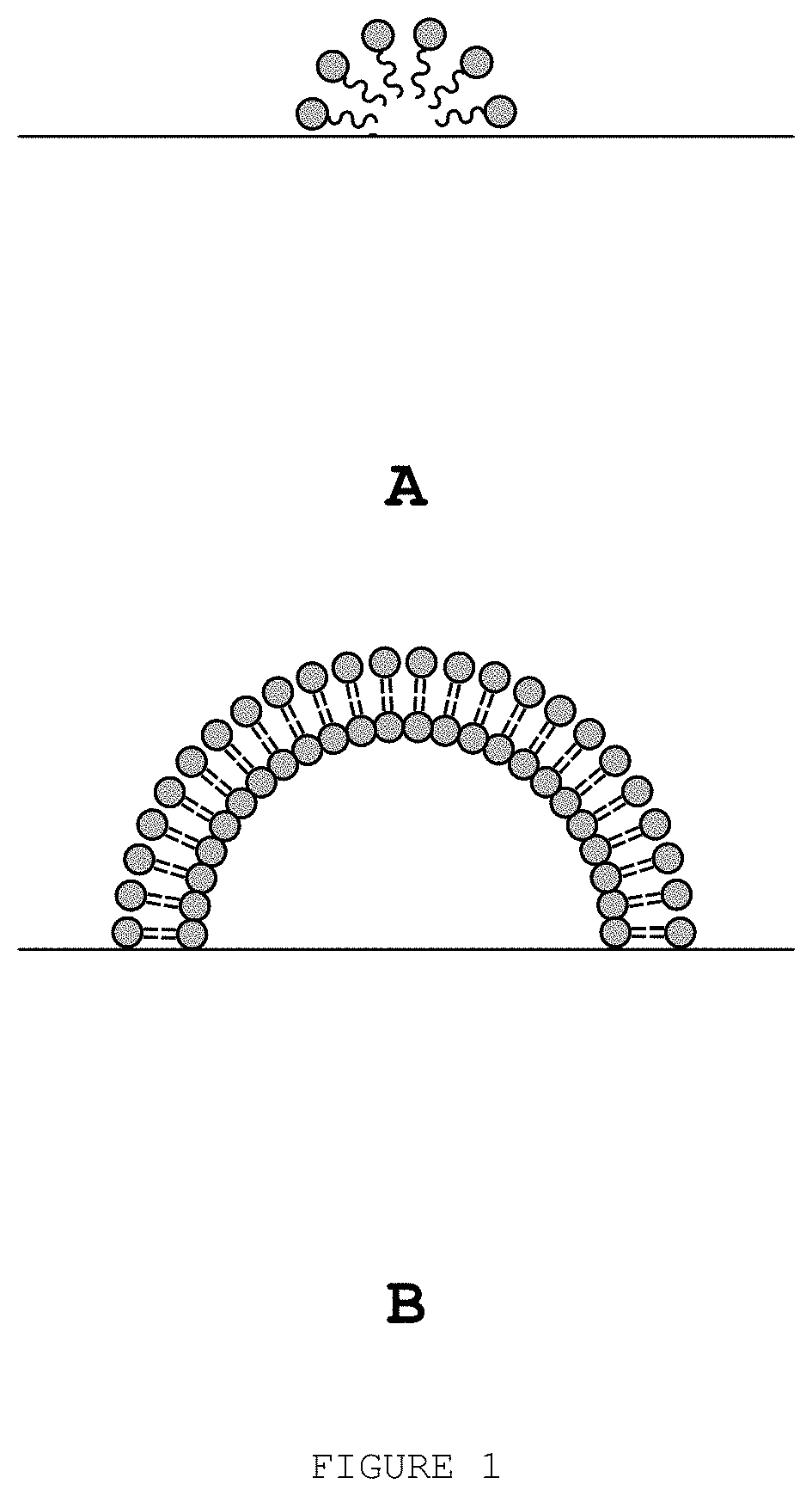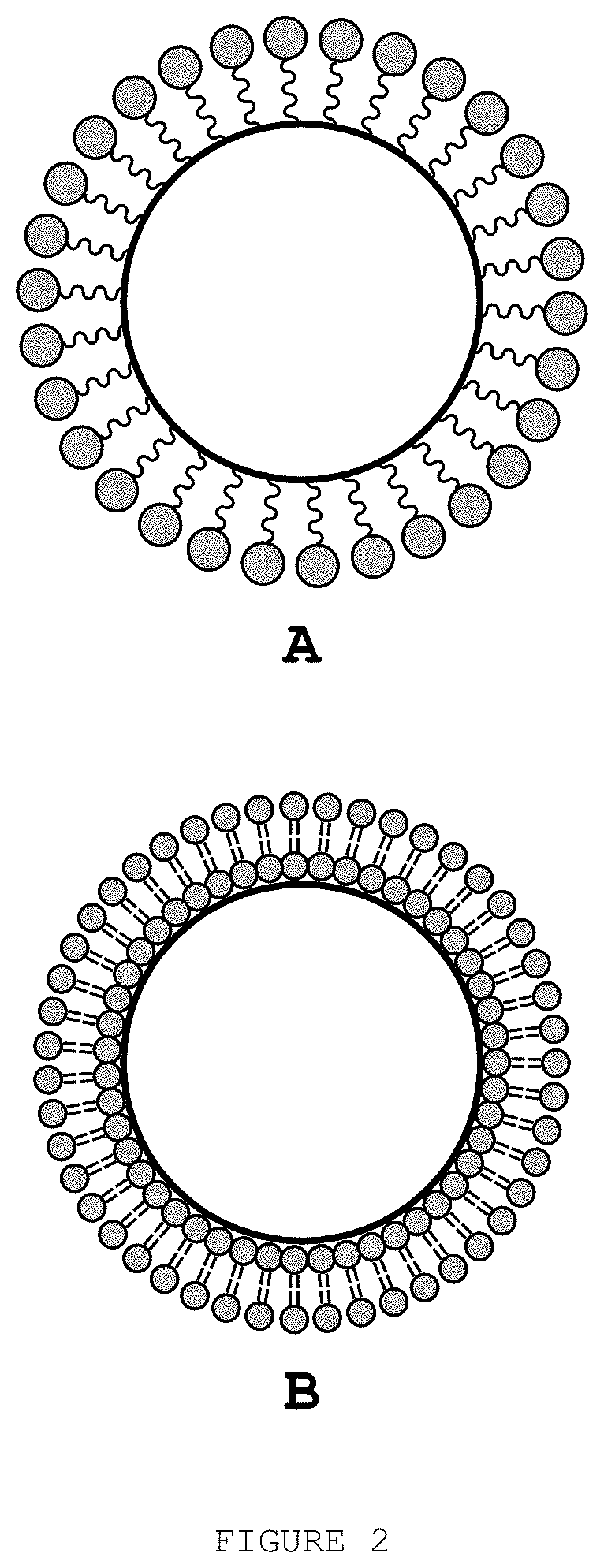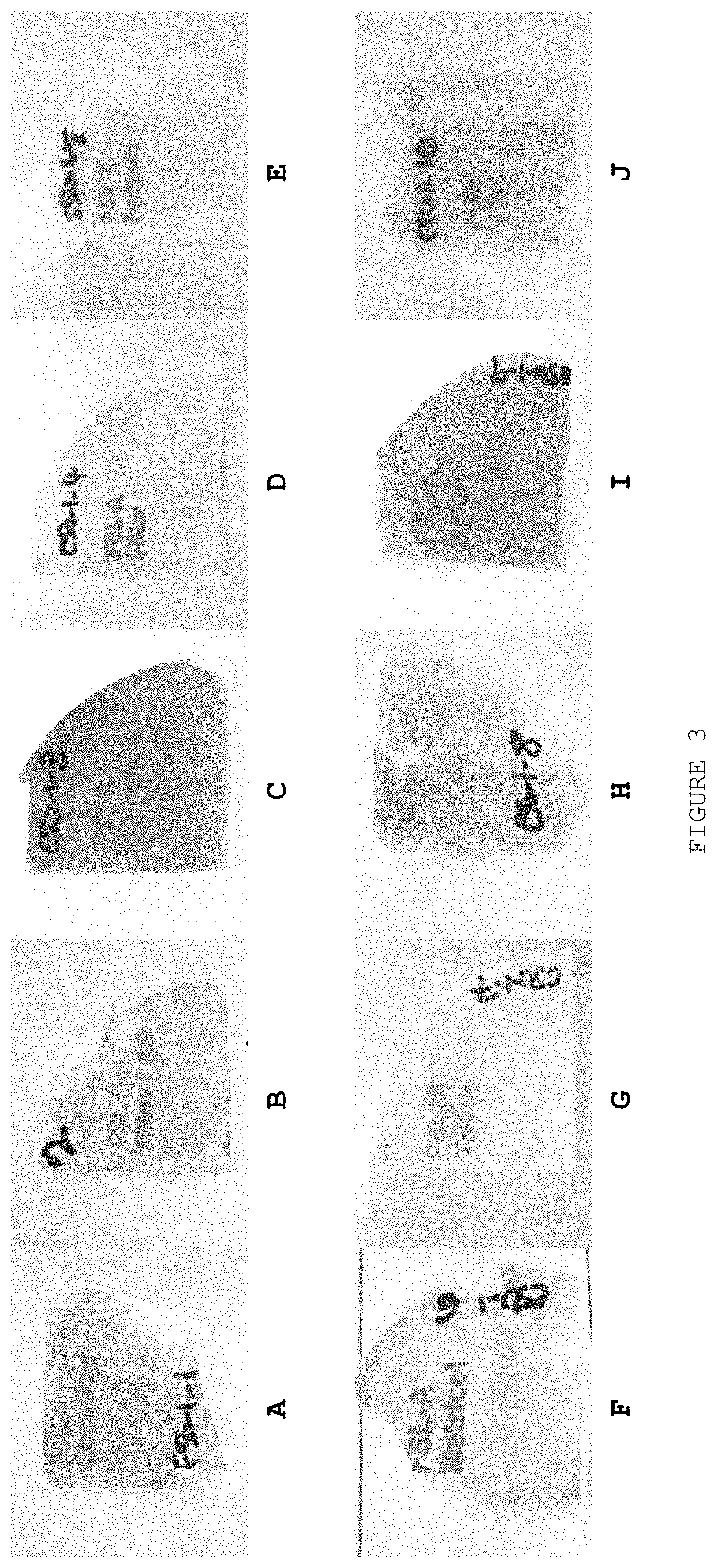Biocompatible method of functionalising substrates with inert surfaces
a functionalisation method and biocompatible technology, applied in biochemistry apparatus and processes, laboratory glassware, instruments, etc., can solve the problems of limited use of glass and limited ability to functionalise its surfa
- Summary
- Abstract
- Description
- Claims
- Application Information
AI Technical Summary
Benefits of technology
Problems solved by technology
Method used
Image
Examples
example 1
[0085]Dispersions of the aminopropyl derivative of blood group A trisaccharide (Atri-S1) and the construct Atri-sp-Ad-DOPE (FSL-A) were prepared at a concentration of 0.2 mM in PBS containing 0.01% polyoxyethylene (20) sorbitan monolaureate (TWEEN™ 20) and 1% inkjet ink (magenta).
[0086]
Atri-S1 (as Described in the Specification Accompanying International Application No. PCT / NZ2005 / 000052 (Publ. No. WO 2005 / 090368))
[0087]
FSL-A (as Described in the Specification Accompanying International Application No. PCT / NZ2005 / 000052 (Publ. No. WO 2005 / 090368))
[0088]The dispersions were loaded into separate ink cartridges of an EPSON STYLUS™ T21 piezoelectric inkjet printer. The identity of the dispersion and substrate were printed onto samples of the following substrates: glass fibre filter paper GC-50 (Advanetc); glass microfiber filter GF / B (Whatman); nylon membrane filter 0.2 μm (Phenomenex); filter paper 1 (Whatman); polypropylene filter membrane (Gelman Sciences); METRICEL™ filter membrane ...
example 2
[0089]Dispersions of the construct Btri-sp-Ad-DOPE (FSL-B) and its monoacyl counterpart (monoacyl-B) were prepared at a concentration of 0.4 mM in PBS containing 0.01% polyoxyethylene (20) sorbitan monolaureate (TWEEN™ 20) and 1% inkjet ink (magenta).
[0090]
FSL-B (as Described in the Specification Accompanying International Application No. PCT / NZ2005 / 000052 (Publ. No. WO 2005 / 090368))
[0091]
Monoacyl-B (as Described in the Specification Accompanying International Application No. PCT / NZ2005 / 000052 (Publ. No. WO 2005 / 090368)
[0092]The dispersions were loaded into separate ink cartridges of an EPSON STYLUS™ T21 piezoelectric inkjet printer. The identity of the dispersion and substrate were printed onto samples of the following substrates: glass fibre filter paper GC-50 (Advanetc); glass microfiber filter GF / B (Whatman); nylon membrane filter 0.2 μm (Phenomenex); filter paper 1 (Whatman); polypropylene filter membrane (Gelman Sciences); METRICEL™ filter membrane GA-3 1.2 μm (Gelman Sciences...
example 3
[0093]Dispersions of the constructs FSL-A and FSL-Biotin at a concentration of 0.5 mg / ml (circa 6 mM) in PBS were painted onto glass fibre threads using a brush. The painted thread was allowed to dry between applications of subsequent layers.
[0094]
FSL-Biotin (as Described in the Specification Accompanying International Application No. PCT / NZ2008 / 000266 (Publ. No. WO 2009 / 048343))
[0095]A glass fibre thread painted with 1 to 3 layers of the dispersion of FSL-A was immersed in a solution of 2% (w / v) bovine serum albumin (BSA) in PBS for 1 hour prior to being rinsed and immersed in a 1 in 5 dilution in BSA of anti-B immunoglobulin (EPICLONE™ monoclonal, CSL Limited) for 30 minutes. The painted glass fibre thread was then washed 6 times with PBS prior to being immersed in a 1:400 dilution of alkaline phosphatase conjugated sheep anti-mouse immunoglobulin (Chemicon) for 30 minutes. The thread was then washed 6 times with PBS followed by a washing of substrate buffer (100 mM Tris, 100 mM N...
PUM
| Property | Measurement | Unit |
|---|---|---|
| temperature | aaaaa | aaaaa |
| concentration | aaaaa | aaaaa |
| pH | aaaaa | aaaaa |
Abstract
Description
Claims
Application Information
 Login to View More
Login to View More - R&D
- Intellectual Property
- Life Sciences
- Materials
- Tech Scout
- Unparalleled Data Quality
- Higher Quality Content
- 60% Fewer Hallucinations
Browse by: Latest US Patents, China's latest patents, Technical Efficacy Thesaurus, Application Domain, Technology Topic, Popular Technical Reports.
© 2025 PatSnap. All rights reserved.Legal|Privacy policy|Modern Slavery Act Transparency Statement|Sitemap|About US| Contact US: help@patsnap.com



